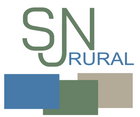Back Up Your Grant Story with Solid Evidence
If you've attended one of my grant writing workshops or webinars, you've undoubtedly heard me emphasize the critical importance of backing up your story with solid evidence. A compelling narrative is essential for capturing a funder's attention, but it's the data and evidence that ultimately convince them to invest in your project. It's the difference between saying "we need help" and demonstrating why and how that help will make a difference. This blog post will explore strategies for effectively weaving evidence and data into your grant narrative, turning a good application into a winning one.
Many grant applications are rejected not because the idea is bad, but because they lack concrete proof of the need, the project's feasibility, or the potential outcomes. Funders aren't just investing in a story; they're investing in a project with a high probability of success, backed by research and data.
So, how do you effectively weave evidence and data into your grant narrative? Here are some strategies that have proven helpful:
1. Understand the Context: National Reports and Industry Data
Big-picture data can be incredibly useful for setting the stage for your project. Reports from national organisations provide valuable insights into industry trends, challenges, and opportunities. For example, reports like the National Farmer's Federation National Farmer Wellbeing Report can offer compelling data on the mental health pressures faced by farming families, which is crucial if your project aims to support rural communities' social viability. These reports add weight to your narrative by demonstrating a broader understanding of the issues you're addressing.
2. Localise the Need: Council Economic Development Strategies
While national data provides context, local council economic development strategies help you pinpoint the specific needs within your community. These strategies often include detailed information on local demographics, economic conditions, and community priorities. Referencing these documents, like the Goondiwindi Regional Council's Economic Development Strategy or Drought Preparedness Plan, shows that you've done your homework and understand the specific challenges and opportunities within your target area. This is especially important for grants that focus on local or regional development.
3. Quantify the Impact: ABS and Census Data
Numbers speak volumes. Data from the Australian Bureau of Statistics (ABS) and census data can be invaluable for quantifying the need for your project and demonstrating its potential impact. For instance, if your project aims to improve access to mental health services in a remote area, census data like the ABS - Regional Population Growth can show the population size, demographics, and existing service access levels. This data provides concrete evidence of the problem and allows you to set realistic and measurable goals for your project.
4. Demonstrate Feasibility: Project-Specific Data and Research
Beyond general statistics, you need data that demonstrates the feasibility of your specific project. This could include:
- Pilot study results: If you've conducted a small-scale trial, the data from that trial can be used to support your larger project.
- Needs assessments: Surveys or interviews with your target population can provide valuable insights into their needs and how your project will address them.
- Expert opinions: Letters of support from experts in the field, or leaders in your community can add credibility to your project and demonstrate its potential impact.
5. Weave the Evidence Seamlessly:
Don't just dump data into your narrative. Integrate it smoothly and explain its relevance to your project. Use data to illustrate your points, support your claims, and paint a clear picture of the problem and your proposed solution. Think of the evidence as the supporting pillars of your narrative – strong, reliable, and essential for holding everything together.
6. Cite Your Sources:
Always cite the sources of your data and evidence. This not only gives credit where it's due but also adds credibility to your application. Use a consistent citation style throughout your proposal, and attach documents to the application when you can.
By strategically using these data sources and weaving them seamlessly into your narrative, you can create a compelling and evidence-based grant application that demonstrates the need, feasibility, and potential impact of your project. This approach will significantly increase your chances of securing the funding you need to make a real difference in your community.

